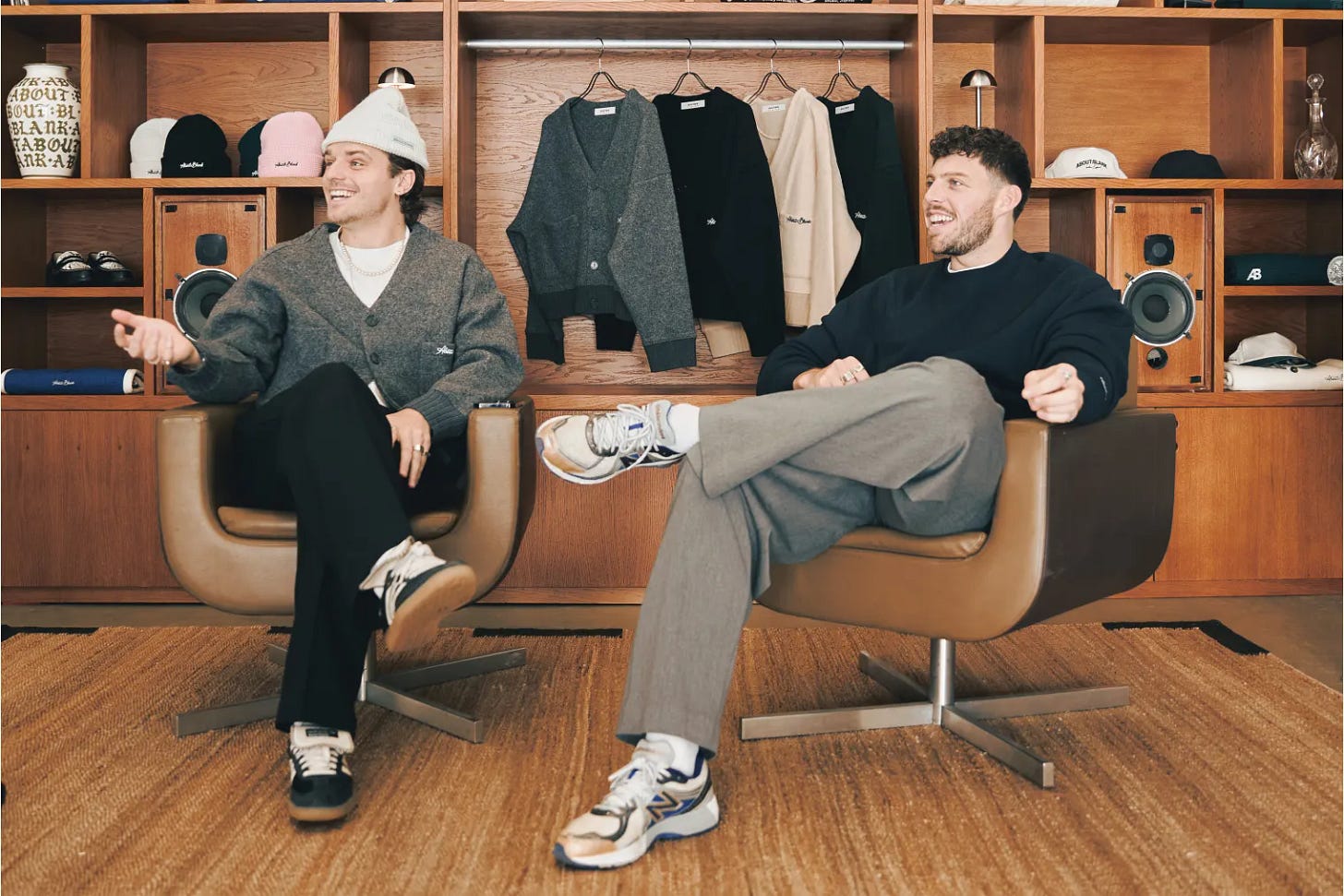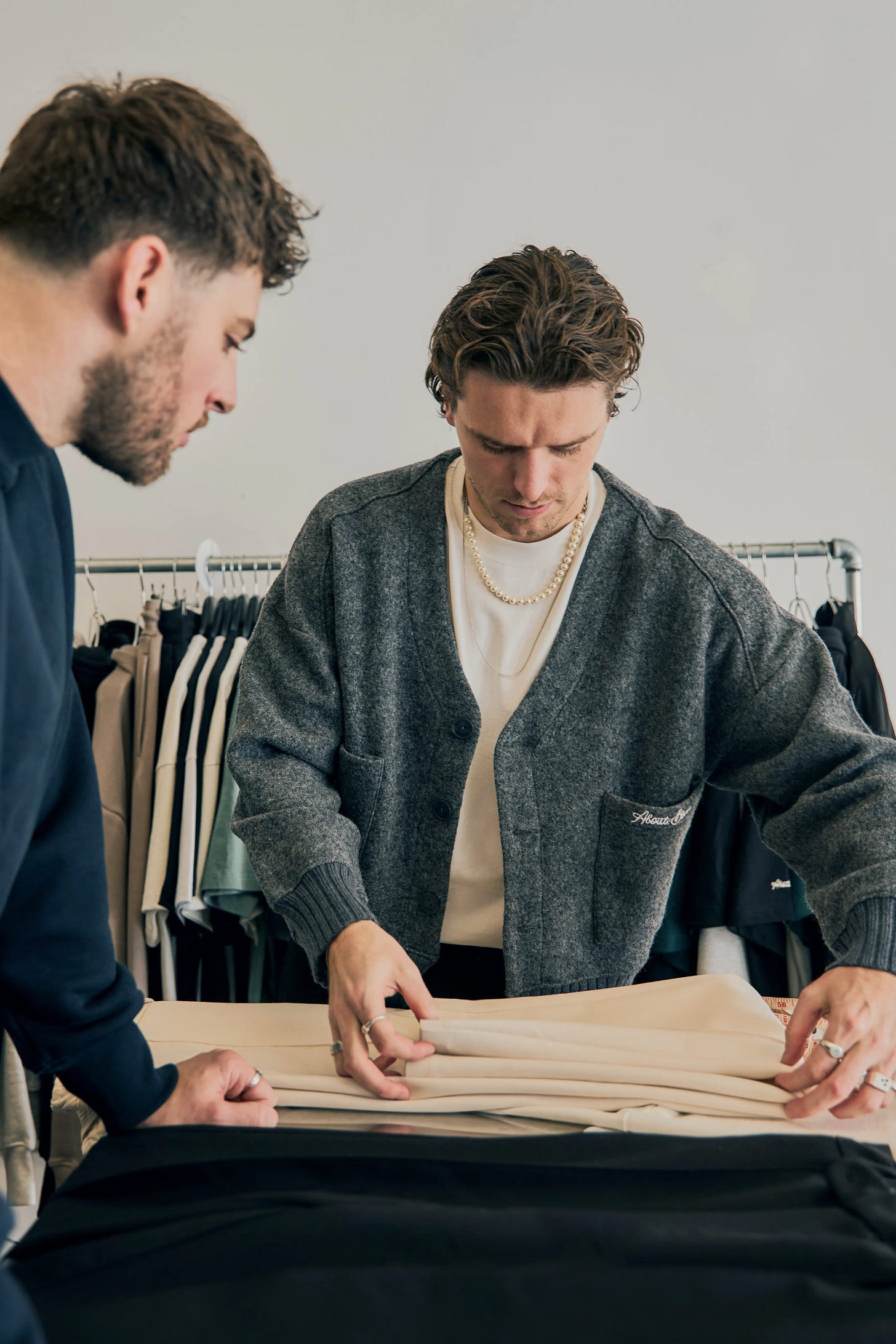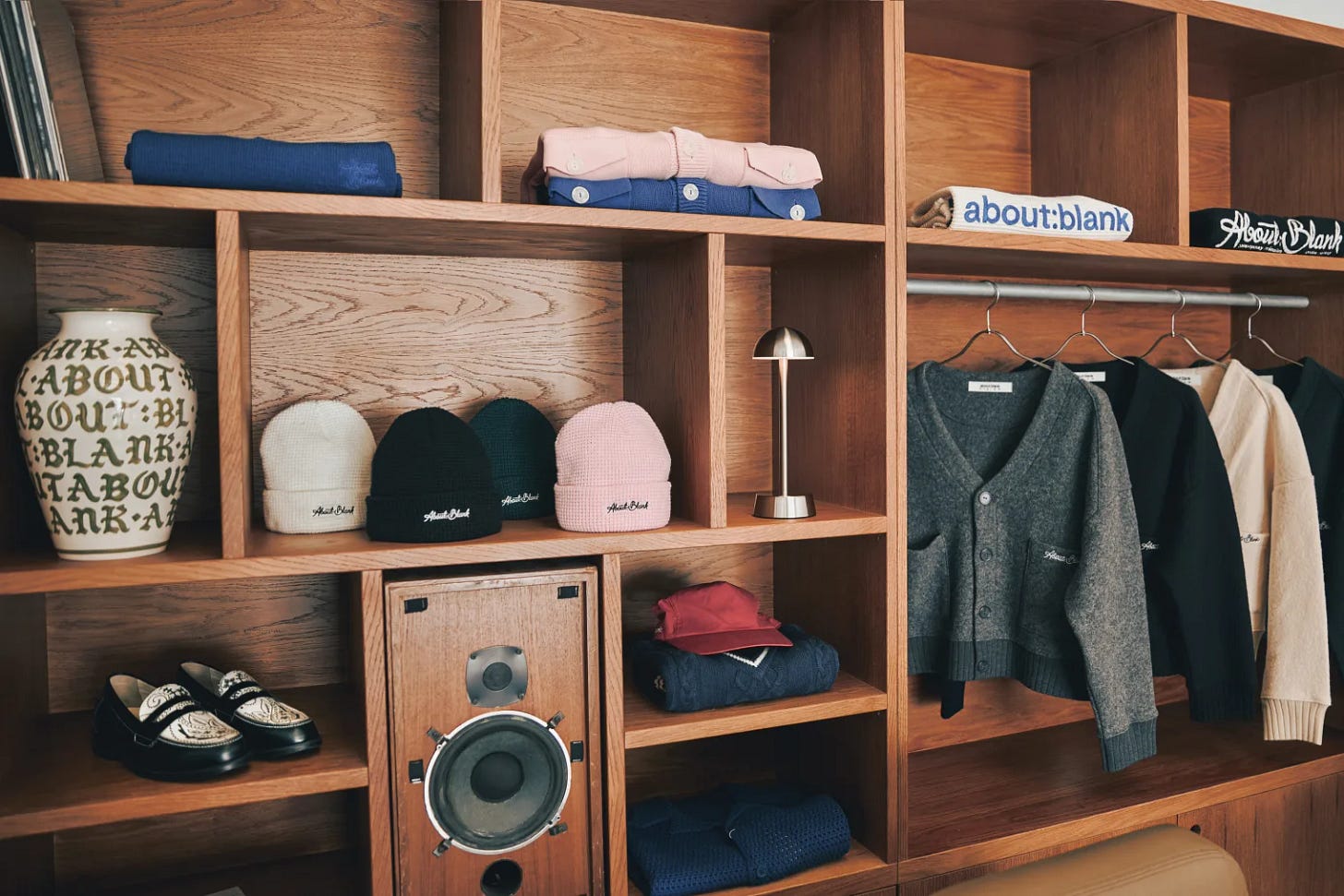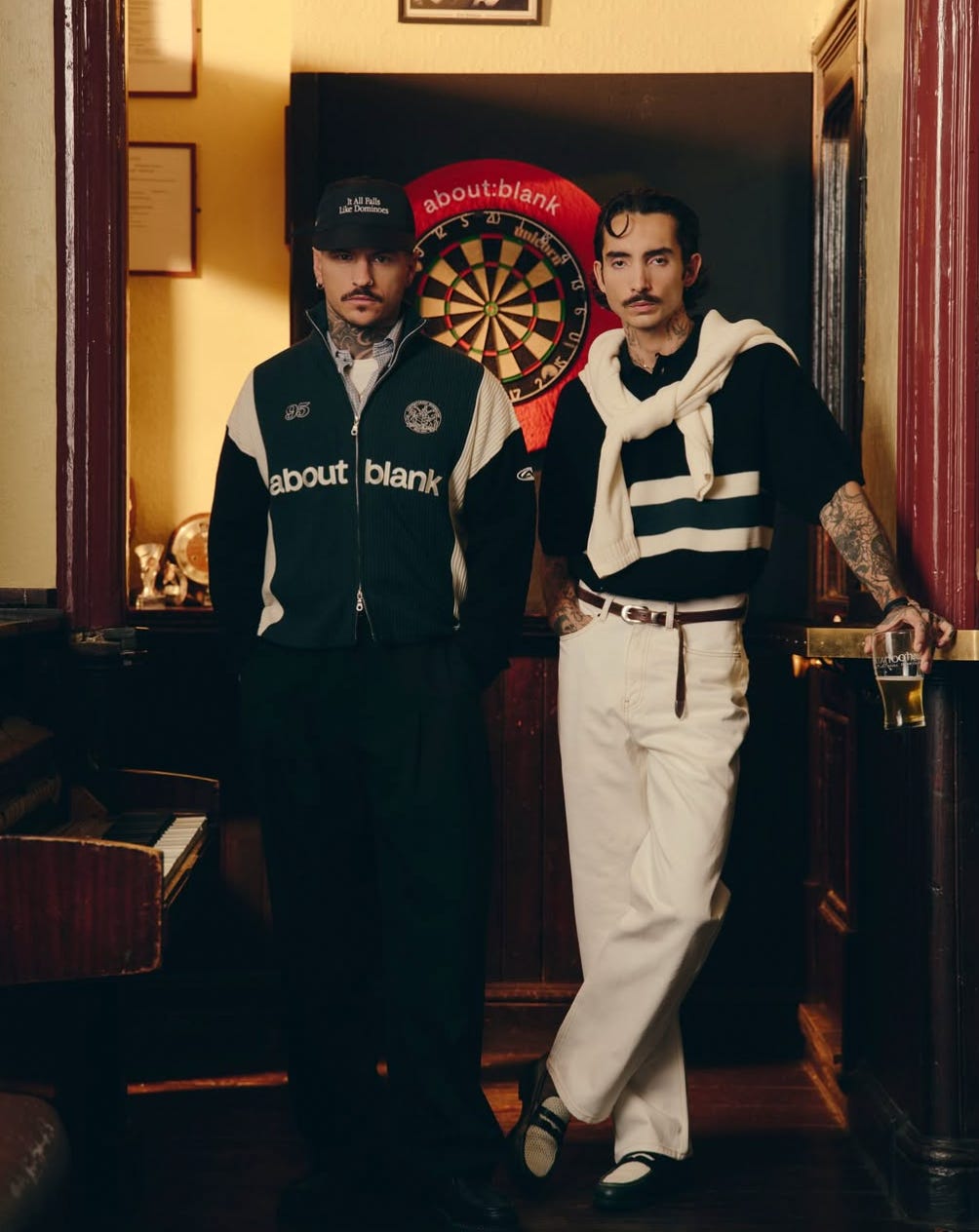The science of building a premium brand
+ an interview with about:blank
The Science of Building a Premium Brand
In our last episode with Air for season 2 in London, we unpack the science behind building a premium brand. We chatted with Earl of East, a fragrance and home goods brand with curated retail, about their story, building a tasteful brand that’s a destination beyond just their own products.
Then we meet the founders of About Blank, who are building their own independent contemporary fashion label that’s become an internet staple, with products consistently selling out, innovative and creative, and more.
Last, we visit a vintage showroom in Shoreditch run by two genius archivists, where we explore what it means to have a truly great brand through the lens of the past.
If you want our free guide on how to creative work for you and your teams in 2026, sign up here - NO work email required.
Photos are courtesy of END Clothing
On evolving from content creator to brand founder
It’s rare to see a content creator evolve into building their own full brand. What was that evolution like for you?
At the start it’s changed significantly. For those who don’t know, I previously had a menswear Instagram page which was heavily focused on reposting people’s content and curating other content. It’s called NCL Gallery. Still going now, but not as much of a big thing.
Perry and I started that, and it was going to be a main driver in pushing the brand. I never really wanted to push it through my personal channel or have my own brand as Jack Henderson or anything like that. I wanted to keep it separate.
Then we actually had an issue with NCL Gallery where the page went down for like six months. That just sort of left us like, how are we going to do this? We’ve been there before. But luckily it was an interesting time in the social media landscape. Reels were just starting up. TikTok was obviously on the rise.
So we just tried to use our existing skills and put a strategy in place and run with it.
On whether aspiring founders should start with curation first
Would you recommend that for people who are starting? Start with curation and then move into building their own brand?
I think now it’s so difficult to get a foothold in anything. It helps if you have experience elsewhere or things that you try elsewhere.
For example, if you’re doing your own personal content creation and you want to start doing reels where you talk to camera or you want to curate things, there’s so many little tidbits to learn. It’s best just to go with it.
All the experts say make a video every day or make a thousand videos and then your thousandth video will be good because you just figure out what works and what doesn’t. I think having other platforms and other pages can help you navigate that because you can apply different things. Like, carousels worked really well on my personal page, let’s make sure we do more carousels for the brand.
On how the brand’s content strategy has evolved
Your strategy shifted a lot. You guys were really focused on carousels and editorial stuff, then started having more video campaigns. How has the content evolved?
We started off really getting a lot of traction from reels, and it was very fast. It was a lot of behind the scenes. It was a lot of slide curation. And then we would always include design cues, tie things back to interiors. Hopefully you can see from the studio that we’re heavily influenced by that.
So it was very much like a mood board in a room with a little bit of product in it. Then we developed further and started to have more cinematic videos and a little bit more behind the scenes.
And then we sort of landed on that carousel lookbook of having a model in the center, set built around them and things like that. Obviously not the first person to do it, won’t be the last person to do it. Super clean, recognizable. Everyone knows it now.
On the economics of shooting content on a budget
That format seems born out of necessity for smaller brands with limited budgets.
That’s a good point for brands starting out, because what people don’t realize is when you’re doing a shoot, especially when you have low budgets, like when you see all these big Bottega shoots or Luar who does some amazing work, you don’t realize that every single shot is lit separately. Sometimes they’re spending two or three days getting those 20 images.
When you’re a small brand who has one background, one camera position, you could run through like 20 looks in like half a day once you get everything set up. It saves you so much money. It was born by necessity more than anything else, trying to capture everything in one go.
Now our shoots last two days, sometimes four days if we go away. And I think it shows, but you have to have the budgets to do that.
On the monthly drop strategy and whether people are fatigued
You mentioned you do monthly drops. Are people fatigued with drops, or does it still work?
I feel like people are definitely starting to get more fatigue. And I feel like as you grow, it’s harder to have those drops have such an impact because you have more product, you have more customers. You want to have people who buy every day.
I think when you’re starting out as a small company or an individual, it’s a great way to sort of get everything in chronological order. So you design around an idea or a theme as we do.
Last year we did About Bank, which was like a lot of homewares obviously, but the influence was old school Wall Street and banking and things like that. Shot it all around Branding. It was all very much tied to that theme. And you design into that while keeping some of our core design values.
Then you shoot the content related to that, and then you build up to the moment. And for some of these smaller brands, people are packing orders themselves as well. So I think that really helps to sort of break everything out and give you a bit more time.
On the sampling and design process
How does the sampling process work for you? How many samples do you go through to get to the final collection?
The level was quite good. We usually do two samples because it’s not that complicated in terms of paneling and detailing. It was just getting the fit right. It wasn’t too bad.
It’s been a long process. Denim is not really our strongest category, but it is our strongest category that we ended up making. So we have to sort of put ourselves down the front. We wanted it done with indigo.
For a brand of our size and age, there’s not a lot of product that doesn’t make the cut. We got it off. We went quite tight. And as a group, we all come together. If one person likes it and no one else does, it’s like a team effort to decide what stays and what goes.
On building a sampling room for collaborators and stylists
Tell us about the sampling room and how people use it.
This is kind of our sampling room for set pieces. We’ve got most of this here. It’s pieces we wanted to sample but didn’t potentially get into production. It’s a lot of stuff that doesn’t make the cut.
We have musicians, DJs that want to come by and get pieces for shows. It just helps organize things by sizes. We had Stormzy come by with his stylist. They were doing a music video for him and someone else.
He’s a big guy though, so it was like double XL. The boxy fits didn’t quite make it, so we didn’t get to the end. But they came through and checked it out.
On the studio space and building in Shoreditch
What’s the vibe of having your own studio space now?
We’ve been in since December. It’s a case of trying to get in and then get organized. We’ve done a bit of a mess of it as well. But this is the raw honest look of being a designer. The creative process as they say.
Having this space allows us to have everything in one place. The sampling room, the design area, the shooting space. It’s all here and it makes the whole workflow so much more efficient than when we were working out of Jack’s flat.
Yeah, we had one of those white backdrops in Jack’s flat. It wasn’t the same. But that’s how we started. And now we’re here with a proper studio setup.






